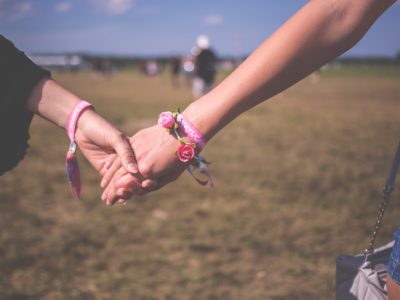I’ve known and felt comfortable about my bisexuality since the sixth grade. At the time, I didn’t have a name for my relationship with crushes and attraction. I knew it felt somehow different. While all my 12-year-old friends dabbled with boyfriends, I busied myself with trying to figure out the right way to be bisexual. But sexuality and preferences reveal themselves in individualistic ways.
A cookie cutter definition of how love and attraction occurs for bisexuals doesn’t exist.
Knowing this helped me leaps and bounds in dating as a queer woman in college.
When I first started mulling over how bisexuality fit into my identity, I became slightly obsessed with trying to achieve the perfect ratio of attraction to all genders. I wondered what bisexual people looked or acted like. I spent so much time trying to create and stay in a box of bisexuality that I didn’t learn how to function in a relationship.
Once I got a little older, my confusion over what bisexuality looked like overpowered my exploration of a love life, and it came back to bite me.
When I was younger, I welcomed confusion about my sexuality; youth and sexuality come with complications and I didn’t need to know all the answers.
I looked at high school simply as a weird, hormonal, confusing time in life. But feeling constantly at odds with the right way to have queer feelings put a cherry on top of my adolescent existential crisis.
I can’t begin to label my few romantic encounters I had with girls in high school as “dates” or call us “girlfriends.” We just kind of clumsily bumped into each other. There were romantic intentions that we didn’t have the mental maturity to truly deal with. Years ago, as a baby gay (slang for the months or even years of life immediately after realizing your queerness), I couldn’t begin to even consider what a kiss or hand holding with a girl meant to me.
I went on my first date with a woman in college sometime during spring semester of freshman year. We met on Tinder, ironically. That seemed a little baffling, considering my own and often other queer women’s tendency to unintentionally ghost one another.
We still decided to go on a date. We grabbed dinner from a Pho place on my campus, watched Space Jam, took a walk together and talked for three hours. While I felt fairly head over heels, the first date might’ve seemed lackluster on her end. I mean Pho and Space Jam on the couch of my tiny apartment where my nightmare roommates could pop in at any time and make uncomfortable comments about us cuddling? Which they did. Yikes. It all seems so tinged with freshman naivety. I had so little experience with dating, and even less with women, that I didn’t know much better.
Now that I am more confident as a queer person, I can say that I know what I want.
I don’t feel the same clumsy amateurishness in my bisexual relationships as I did as a teenager. I learned a lot of lessons about my sexuality and myself. My bisexuality won’t suddenly disappear from dates with men. A right way to experience bisexuality doesn’t exist. Communication with women doesn’t need to feel like pulling teeth.
Dating women today gives me just as much anxiety, fulfillment and excitement as it did during my baby gay years. But I now feel this newfound security in my existence as a queer person. I feel confident sharing something intimate with another queer person. Knowing we share our appreciation for one another in a non-heterosexual way makes everything a little bit softer and memorable.



















